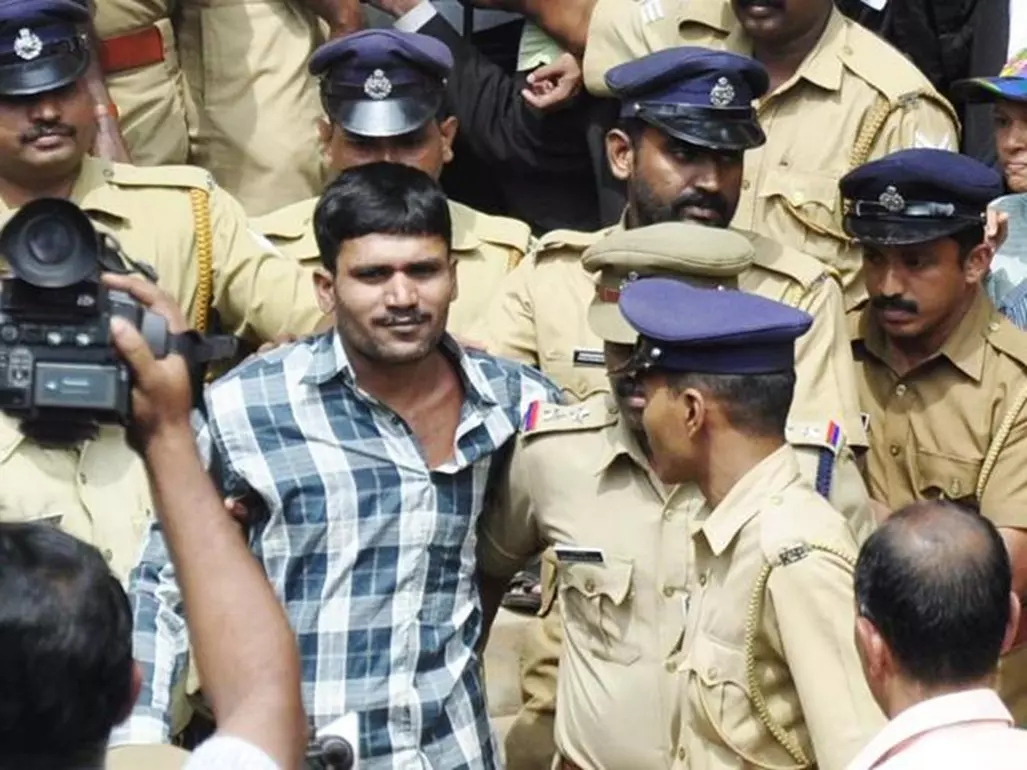
What happened in Soumya rape and murder case in Kerala? A quick recap
Govindachamy was nabbed from Talappu near Kannur town hours after escaping from Kannur Central Jail; Soumya's mother demands strict security

Govindachamy, the convict in the sensational 2011 Soumya rape and murder case, who was serving a life sentence for rape, has been arrested after escaping from Kerala’s Kannur Central Jail in the early hours of Friday (July 25).
He allegedly was nabbed from Talappu, near Kannur town.
Also Read: Soumya murder: Hours after escape, convict Govindachamy arrested in Kannur
Govindachamy nabbed
He was allegedly hiding inside an abandoned well. The Kannur Police Commissioner confirmed that he is in custody and is now being taken to the police station.
Police allegedly received a tip-off from an auto-rickshaw driver who spotted him earlier this morning.
Reacting to Govindachamy's arrest, Soumya's mother said that he must be kept under tight security as he could pose a threat to other women.
"I was always sure he would be caught. He must be kept under strict security. I believe he had help—this needs to be investigated. Otherwise, he remains a threat to all women. I thank the people of Kannur and the police. It’s clear that the people have not forgotten Soumya," she said.
Convict found missing
Govindachamy, who was serving a life sentence for the rape and murder of 23-year-old Soumya, was discovered missing from his cell during a routine inspection around 5 am today.
Preliminary investigations within the prison premises revealed that he cut through the iron bars of his high-security cell in the 10th block and used clothes to fashion a rope to scale down the prison wall.
CCTV footage reportedly indicates that he received outside assistance during his escape, adding another layer to the unfolding mystery.
Soumya rape case
The Soumya case refers to the brutal rape and murder of a 23-year-old saleswoman, Soumya, on February 1, 2011.
Soumya, a saleswoman from Shoranur, was travelling in a nearly empty ladies' compartment in the Ernakulam-Shoranur passenger train when Govindachamy attacked her.
He robbed her, pushed her out of the moving train near Vallathol Nagar, and then raped her in the nearby woods.
She succumbed to her injuries on February 6, 2011, at Thrissur Medical College Hospital.
Also Read: IIM-Calcutta rape accused admits to spiking drinks, say police
Arrested within 2 days
Govindachamy was taken into custody by the police on February 3, 2011 — just two days after the incident.
His arrest was based on a combination of crucial evidence. Witnesses reportedly saw him in the passenger train and near the Kalamandalam bus stop around the time of the incident.
A button from his shirt was found in the women’s compartment where Soumya was attacked.
Crucial DNA evidence
DNA analysis played a key role, with traces of his semen found at the crime scene and on the victim’s body and clothes.
Additionally, Soumya’s fingernails had traces of his skin cells and blood, and fingernail marks were seen on his body.
Govindachamy also reportedly made an extra-judicial confession to a doctor at Thrissur Government Medical College Hospital.
Soumya’s mobile phone was eventually recovered and traced back to Govindachamy, who had sold it.
Also Read: Soumya murder convict Govindachamy escapes from Kannur Central Jail
SC overturns death sentence
The Thrissur Fast Track Court found Govindachamy guilty of rape, murder, robbery, and criminal trespass, awarding him the death penalty — calling it one of the “rarest of rare” cases.
While the Kerala High Court upheld the conviction, the Supreme Court later commuted the death sentence for murder to seven years imprisonment, while upholding the life sentence for rape.
The apex court overturned the murder conviction, reasoning that the prosecution had failed to conclusively establish intent to kill or prove that Govindachamy knew his actions were likely to result in death.
He was instead convicted under Sections 376 (rape), 394 (causing hurt during robbery), and 325 (grievous hurt) of the Indian Penal Code, and his punishment was reduced to life imprisonment.

